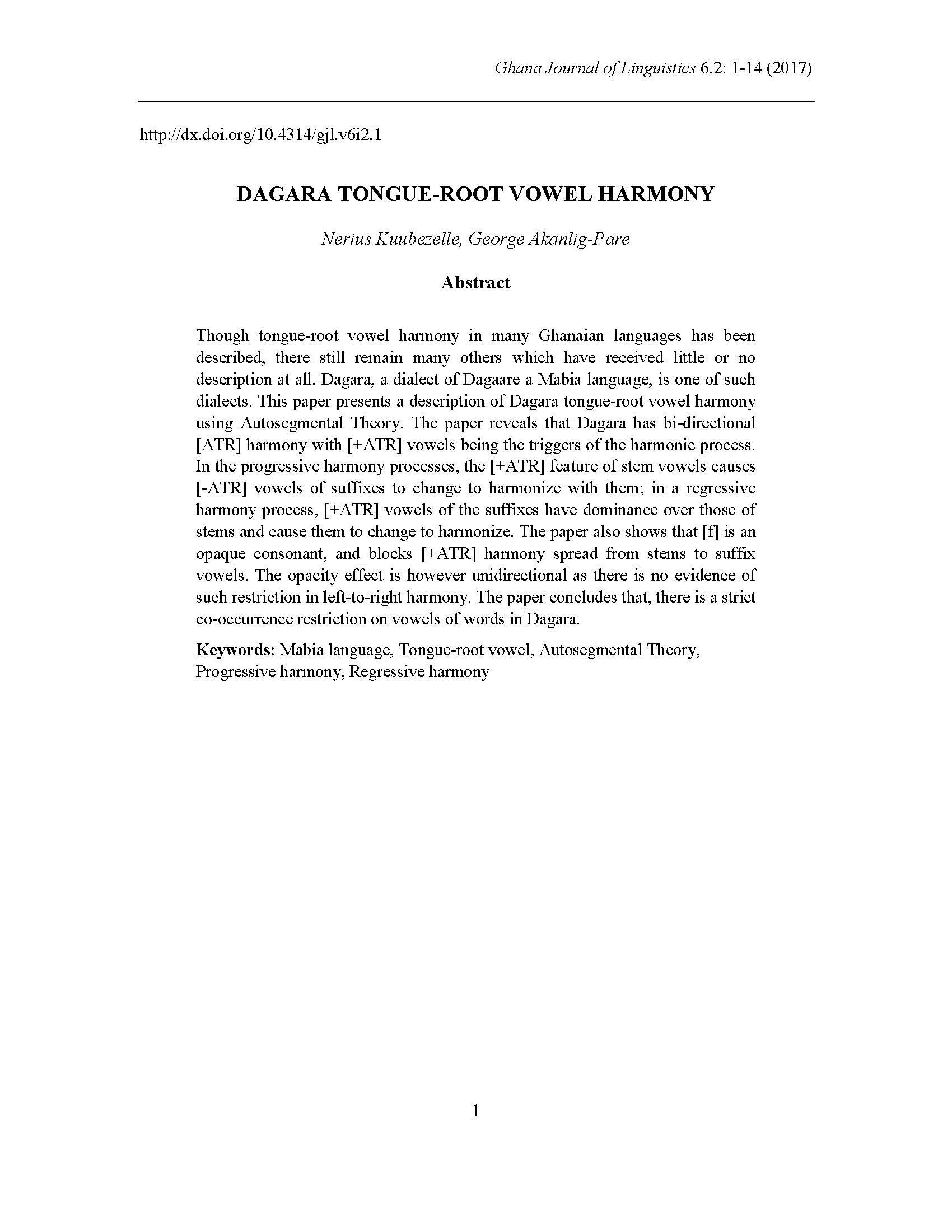Dagara Tongue-Root Vowel Harmony
DOI:
https://doi.org/10.4314/gjl.v6i2.132Abstract
Though tongue-root vowel harmony in many Ghanaian languages has been described, there still remain many others which have received little or no description at all. Dagara, a dialect of Dagaare a Mabia language, is one of such dialects. This paper presents a description of Dagara tongue-root vowel harmony using Autosegmental Theory. The paper reveals that Dagara has bi-directional [ATR] harmony with [+ATR] vowels being the triggers of the harmonic process. In the progressive harmony processes, the [+ATR] feature of stem vowels causes [-ATR] vowels of suffixes to change to harmonize with them; in a regressive harmony process, [+ATR] vowels of the suffixes have dominance over those of stems and cause them to change to harmonize. The paper also shows that [f] is an opaque consonant, and blocks [+ATR] harmony spread from stems to suffix vowels. The opacity effect is however unidirectional as there is no evidence of such restriction in left-to-right harmony. The paper concludes that, there is a strict co-occurrence restriction on vowels of words in Dagara.

Downloads
Published
How to Cite
Issue
Section
License
The Ghana Journal of Linguistics is published by the Linguistics Association of Ghana, P. O. Box LG 61, Legon, Accra, Ghana.
LAG Email: linguisticsgh@gmail.com. Website: http://www.laghana.org
GJL Email: gjl@laghana.org Website: http://www.laghana.org/gjl
© Linguistics Association of Ghana and individual authors, 2023.
